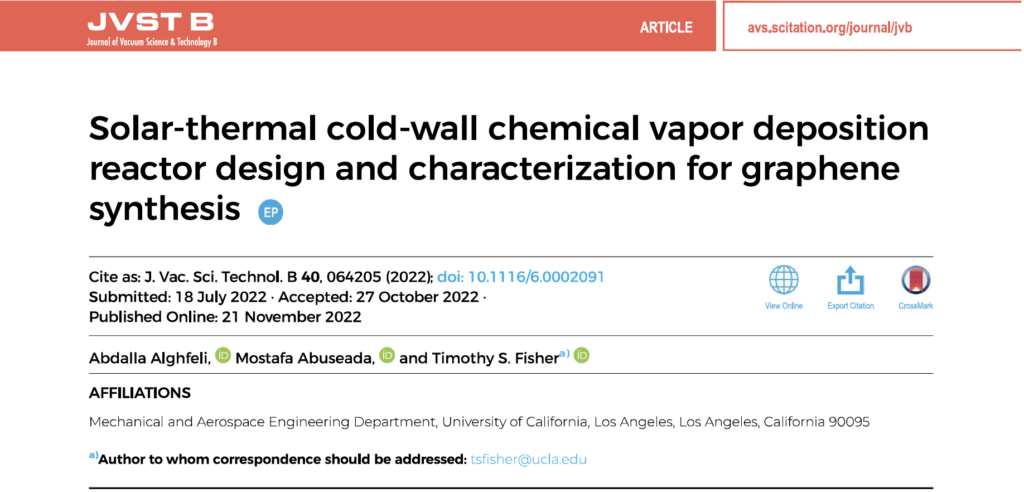- Design a solar-thermal cold-wall chemical vapor deposition (CVD) system using a 10 kWe custom-built high-flux solar simulator (HFSS) that closely mimics the solar spectrum.
- Automate material synthesis, specifically graphene, to ensure safe operation, precise control, and real-time monitoring of process parameters.
- Develop a numerical heat transfer model for a thin copper substrate to compute the substrate’s temperature profile, which is a critical design parameter for the graphene synthesis process.
Manufacturing processes are often highly energy-intensive, even when the energy is primarily used for direct heating processes. The required energy tends to derive from local utilities, which currently employ a blend of sources ranging from fossil fuels to renewable wind and solar photovoltaics, among others, when the end manufacturing need is thermal energy. Direct solar-thermal capture provides a compelling alternative that utilizes renewable energy to reduce greenhouse gas emissions from industrial processes, but one that has rarely been employed to date. In this study, a 10 kWe custom-built high flux solar simulator (HFSS) that closely approximates the solar spectrum produces a heat flux distribution with an adjustable peak between 1.5 and 4.5 MW/m^2. The HFSS system is coupled to a cold-wall chemical vapor deposition (CVD) system that is equipped to automate graphene synthesis while providing safe operation, precise control, and real-time monitoring of process parameters. A numerical heat transfer model of a thin copper substrate is derived and validated to compute the substrate’s temperature profile prior to the synthesis process. The peak substrate temperature is correlated to the HFSS supply current and vacuum pressure, as it serves as a critical design parameter during graphene synthesis. We report the synthesis of high-quality graphene films on copper substrates with an average Raman peak intensity ratio 𝐼𝐷/𝐼𝐺 of 0.17. Backscattered electron microscopy reveals a characteristic grain size of 120 𝜇m, with an area ratio of 16 when compared to that of low-quality graphene on copper. The reported solar-thermal CVD system demonstrates the ability to produce a high-value product, namely, graphene on copper, directly from a renewable energy resource with process control and automation that enables synthesis under a variety of conditions2.




